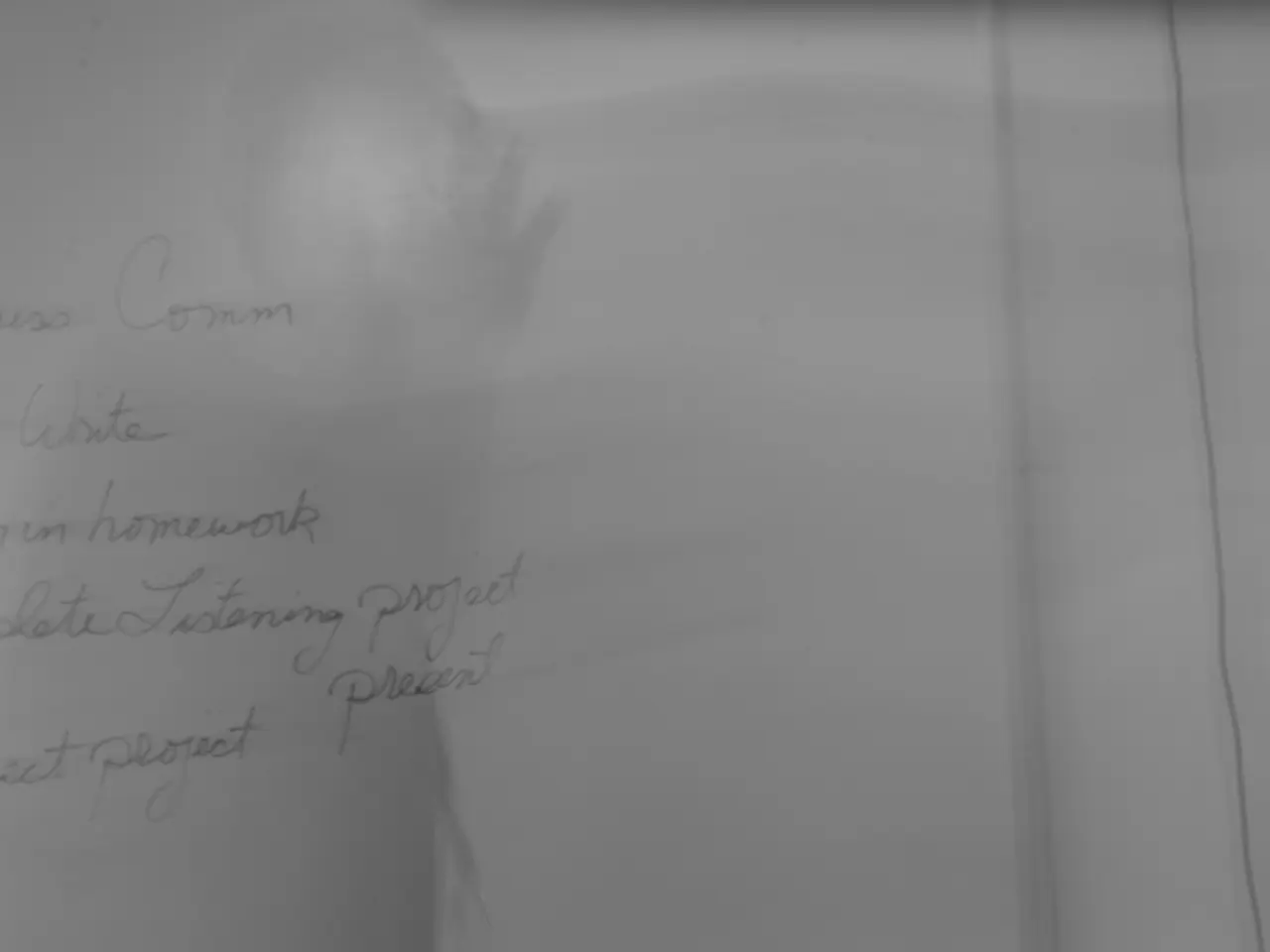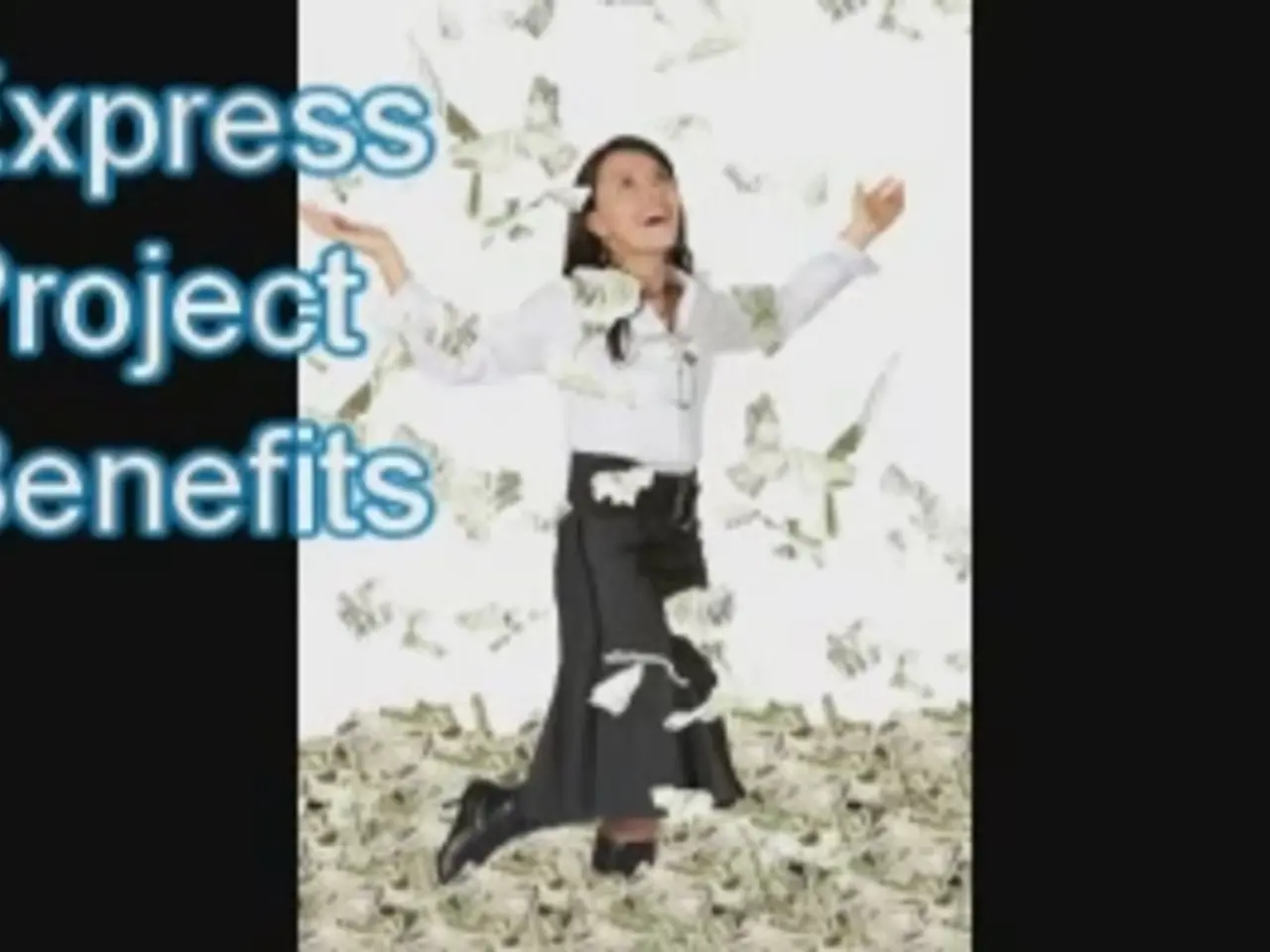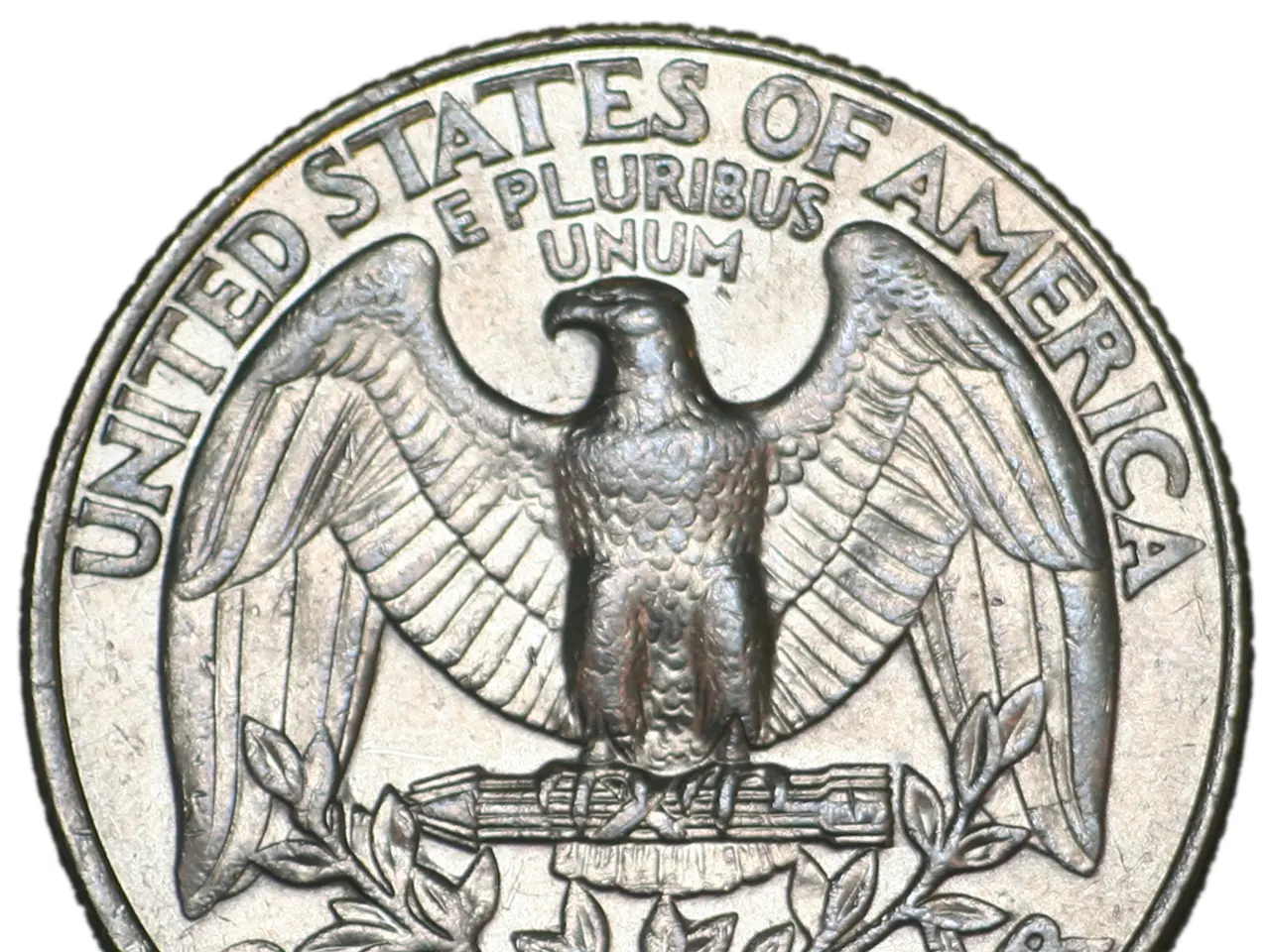Central Bank maintains interest rate steady, monitoring tariff effects; Trump criticizes Powell once more
The Fed Remains Cautious as Tariffs Cloud Economic Outlook
In a move that didn't come as a surprise, the Federal Reserve decided to keep its key interest rate unchanged on Wednesday. With uncertainty looming over the economy due to tariffs, the Fed is taking it slow and waiting for more data to crystalize.
The Fed's policymakers still anticipate slashing rates twice this year, despite the fact that they also predict President Donald Trump's import duties will drive inflation higher. They also foresee a slowdown in growth and an uptick in unemployment, according to their latest quarterly projections.
After three rate cuts towards the end of last year, the Fed has been on hold. Inflation has been steadily declining since January, but Fed Chairman Jerome Powell warned at a press conference that tariffs could keep inflation from rebounding, with prices set to rise in the upcoming months. The Fed expects this price surge to be temporary but wants to gather more information before making any decisions.
"Increases in tariffs this year are likely to push up prices and weigh on economic activity," Powell said. "This is something we know is coming, we just don't know the size of it."
Interest rate adjustments usually impact borrowing costs for mortgages, auto loans, credit cards, and business loans. So far, inflation has continued to drop while some cracks have emerged, particularly in the housing market, where increasing borrowing costs are dampening sales and homebuilding. Employment growth has also slowed down.
Despite the signs of an economic cool down, Powell believes the economy remains robust and the Fed needs to consider the potential for prices to rise soon. "You can see perhaps a very, very slow continued cooling" in the job market, he said, but it's not a cause for concern at this time.
When it comes to cutting rates, the Fed will be closely watching how tariffs affect the economy throughout the summer. Macro strategist George Pearkes of Bespoke Investment Group interpreted the Fed's statement to mean that a rate cut won't happen until September at the earliest, as the next meeting isn't until July. Wall Street investors also expect a rate cut in September.
It's worth noting that the Fed sees inflation rising to 3% by the end of this year, from 2.1% in April, according to the projections released Wednesday. They also predict the unemployment rate will rise to 4.5%, from 4.2% now. The growth rate is expected to slow down to just 1.4% this year, from 2.5% last year.
Former Fed economist Claudia Sahm said that the projections demonstrate that policymakers expect inflation to drop again in 2026 and 2027, with tariffs only having a temporary impact. However, she also stated that the Fed isn't yet confident enough in this prediction.
In 2019, the Fed was looking at multiple rate cuts in the second half of the year to offset the negative effects of tariffs on economic growth. The first cut was expected in July 2019, followed by additional cuts through November. Yet, the timeline for this was subject to change based on the severity and duration of tariff impacts. According to research, the tariffs imposed in 2019 contributed to a 0.3% contraction in GDP during Q1 2019, mainly due to businesses stockpiling imports ahead of tariff hikes and disrupting normal trade patterns[1].
Trump has been criticizing Powell for not cutting rates faster, using his Twitter account to express his discontent consistently. Trump argues that lower rates would boost the economy, but economists warn that cutting rates solely to reduce government borrowing costs undermines the Fed's constitutional mandate to focus on price stability and maximum employment.
[1] Hulit, E., & Rauh, A. (2020, February 27). Battle Royale in Washington Alters Fed's Role as Economic First Responder. The Wall Street Journal. https://www.wsj.com/articles/battle-royale-in-washington-alters-feds-role-as-economic-first-responder-11582902942.
- The Federal Reserve's current outlook indicates potential increases in inflation, reaching 3% by the end of the year, largely due to tariffs imposed by President Donald Trump.
- In Seattle, a city known for tech giants like Amazon and Microsoft, local businesses are closely monitoring the Fed's decision-making process, as changes in interest rates can significantly impact the region's economy and business loans.
- Amongst the general news, discussions about politics and the Federal Reserve's actions have a direct impact on the housing market, as inflation and interest rate adjustments may affect mortgage, auto, and credit card borrowing costs, potentially slowing down sales and homebuilding.
- In the realm of finance, economists are debating whether the Fed should cut interest rates again to stimulate economic growth, particularly in light of the slowdown in growth and uptick in unemployment due to tariffs.
- As the Fed awaits more data and assesses the lasting impact of tariffs on the overall economy, they are expected to make rate decisions throughout the summer, with Wall Street investors predicting a rate cut in September. However, former Fed economist Claudia Sahm has stated that the Fed isn't yet confident enough in its predictions about tariffs' temporary impact on economic growth and inflation.




